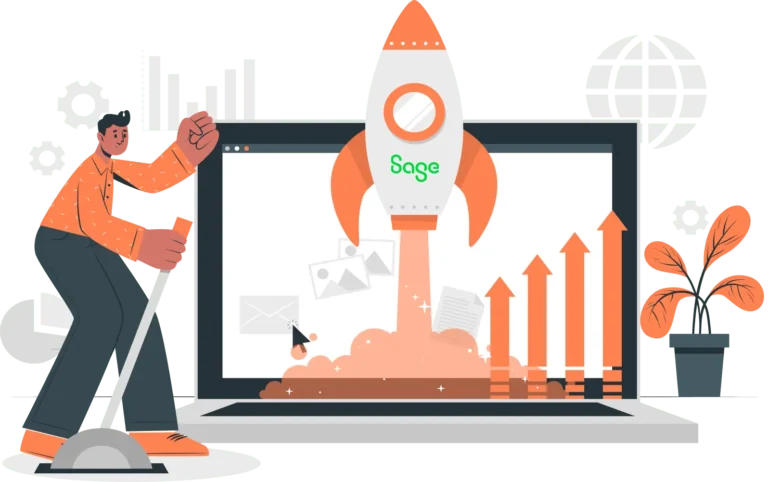Sage 500
Manage complex operations, increase productivity, and reduce costs with enterprise resource planning.
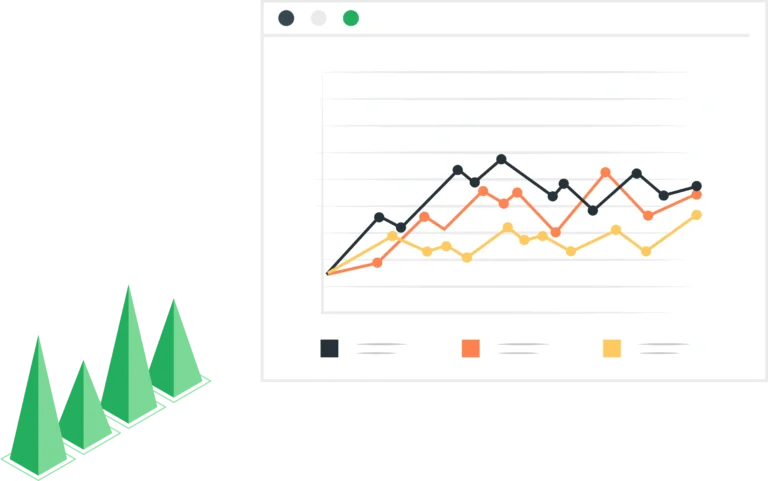
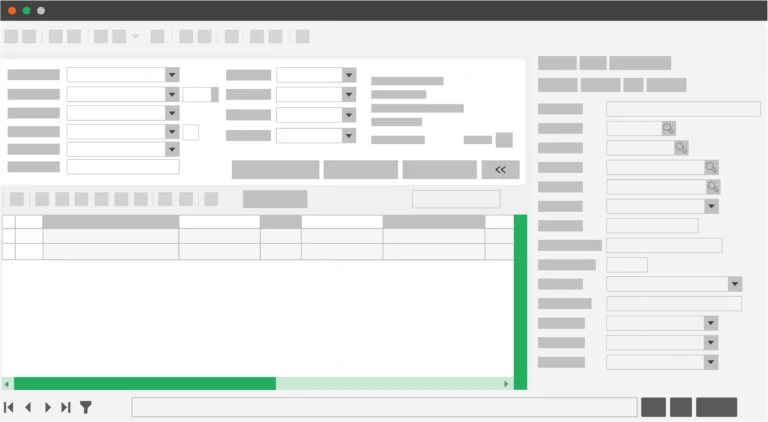
boost efficiency with a trusted business management solution
What Is Sage 500?
Our customers need a comprehensive business management solution to help manage their complex operations. Sage 500 ERP software is a complete enterprise management solution for your business. It provides a comprehensive suite of tools for financial management, supply chain management, project management, business intelligence (BI), and other business functions. It combines accounting functionality like general ledger accounts, AR, and AP with broader ERP functionality that touches every part of your business.
Sage 500 software is an on-premise solution specifically designed to manage complex operations, automate manual processes, and provide real-time access to critical business information. It will optimize your procurement and manufacturing processes, and allow you to gain greater insight to make more informed business decisions.
Go with a business management solution that grows with your business.
scale faster and work smarter with advanced business management software
How Sage 500 Works
Enjoy faster, smarter growth with Sage 500’s suite of GAAP-compliant accounting and financial modules. The software provides your team with greater insight into day-today operations, giving them the ability to make more informed decisions for your business.
Sage ERP Mas 500 software is easily customizable, so it fits the way you do business. It offers robust accounting, distribution, supply chain, and manufacturing management functionality. Increase productivity and accuracy while reducing costs with Sage.
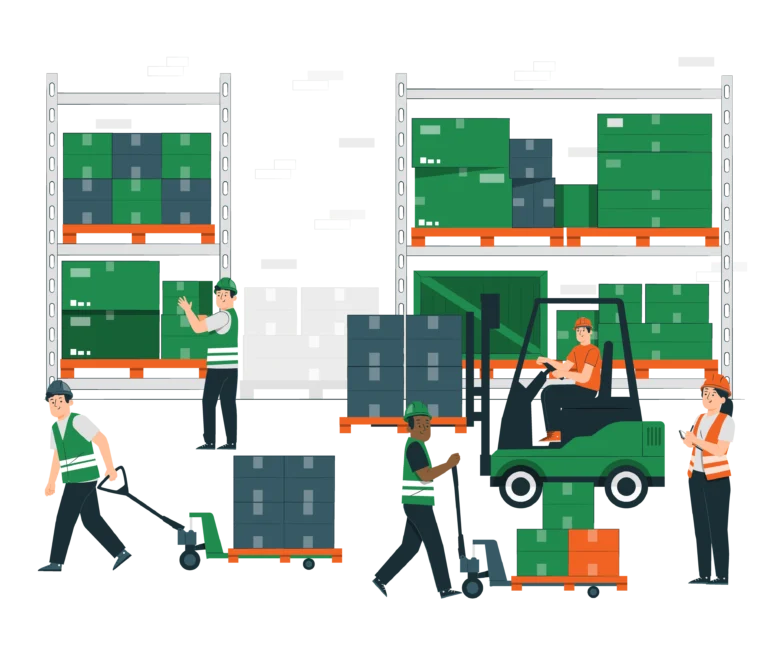
Your Preferred Sage 500 Partner
Sage 500 ERP (previously known as Sage MAS 500) is a comprehensive enterprise resource planning (ERP) solution designed to help forward-thinking businesses optimize their operations and make informed decisions. It combines robust financial accounting capabilities with a wide array of business functions in a modular structure, offering a cost-effective solution with a strong return on investment (ROI). It is a strong, versatile ERP system that combines financial accounting software with broader ERP functionalities, including supply chain management, warehouse management, human resources management, and more.
At CertiPro, our expert team of certified Sage 500 consultants and Sage 500 integration specialists have extensive experience with Sage 500 ERP, including with the full Sage ERP product portfolio, including conversions, customizations, installs, upgrades, support, and training. Our developers have a deep understanding of Microsoft Visual Basic 6.0 VB6, the underlying programming language that supports Sage 500. It was also built on top of the Microsoft SQL server and Microsoft office technology.
all-in-one business management software
Sage 500 Features and Add-On Solutions
Benefit from powerful Sage 500 modules and the wider ecosystem of Sage 500 add-ons that improve efficiency.
Accounting and Finance
Boost productivity and efficiency with robust, fully integrated financial accounting software. Sage 500 ERP solutions allow you to streamline processes, enhance efficiency, and gain valuable insights with comprehensive functionality tailored to your business’s specific needs.
Sage 500 ERP offers a powerful suite of tightly integrated, GAAP-compliant accounting and financial modules that can be customized to fit your workflow. Seamless integration with Microsoft Office via Sage 500 Office further enhances productivity, simplifying daily tasks with predefined or custom templates, as well as mail merge and export features.
Accounting and Finance Modules
- Account Payable (AP)
- Accounts Receivable (AR)
- Sage Budgeting and Planning
- Allocations
- Sage 500 Fixed Assets
- Cash Management
- Fixed Asset Accounting
- Fixed Asset Inventory
- General Ledger
- Multicurrency Manager
- Sales Tax
Sage 500 Business Intelligence and Reporting
Gain immediate visibility across your business, analyze market trends, and make informed decisions with ease. Sage 500 ERP offers a wide range of integrated business intelligence tools, delivering a complete information management solution. Customizable report generation, inquiry, analysis, and dashboard applications integrate seamlessly with your Sage 500 ERP system, providing real-time insights into every facet of your business.
Sage 500 Business Intelligence and Reporting Modules
- Sage Budgeting and Planning
- Business Insights Dashboard
- Business Insights Analyzer
- Sage 500 ERP Alerts
- Sage 500 ERP Office
- Web Reports
- Sage 500 ERP Intelligence and Reporting
- Alerts and Workflows
Purchasing Management
Sage 500 ERP integrates advanced requirements planning algorithms with a streamlined, customizable purchasing and receiving process to fit your workflow. Features like vendor performance reporting, freight and third-party expense allocation, receipt and invoice matching, and directed put-away enhance the accuracy and efficiency of the entire purchase management process.
Sage 500 Purchasing Management Modules
- Inventory Management
- Purchase Order
Sales Management
Sage 500 ERP simplifies and streamlines the sales process with integrated credit card payment functions, automated sales tax calculations, customizable data entry screens, and directed pick, pack, and ship features. This functionality is seamlessly linked with customer records, multiple shipping addresses, returns authorization, and flexible pricing options, improving the customer experience and boosting satisfaction. Additionally, sales trending and projected demand insights feed into the replenishment planning function, driving greater efficiency in supply chain management.
Sage 500 Sales Management Modules
- Sales Tax
- Sales Order
- Credit Card Processing
- Return Merchandise Authorization
- Product Configurator
- Estimating
- eBusiness
Inventory and Warehouse Management
Whether your business operates a single warehouse or multiple locations, specializes in distribution or manufacturing, utilizes physical or virtual spaces, requires lot and serial tracking, or covers large areas or just a small backroom, Sage 500 ERP offers the flexibility to optimize efficiency, increase inventory turnover, and reduce both shortages and overstock.
Sage 500 Inventory and Warehouse Management Modules
- Inventory Replenishment
- Inventory Management
- Warehouse Management
- Materials Requirements Planning
Sage 500 Customer Relationship Management
Enhance customer satisfaction, loyalty, and ROI with Sage 500 ERP. Set higher standards for customer service, improve retention, and drive sales. The Sage Customer Relationship Management (CRM) solution integrates seamlessly with your Sage 500 ERP system, allowing you to profile, track, and target customers for better financial results. With real-time data sharing, you gain instant access to critical customer information, boosting productivity across your business.
Human Resources Management and Payroll
If you’re currently relying on a service bureau for payroll processing, there’s a more efficient solution. Reduce costs and retain full control over your payroll with in-house payroll processing using Sage 500 ERP. Effortlessly manage all payroll functions, from basic to specialized, covering various pay frequencies, earnings, multiple locations and currencies, taxes and reporting, benefits, and more.
Sage 500 HR and Payroll Modules
- Sage HRMS
- US Payroll
- Canadian Payroll
- EFT Direct Payroll
Time and Project Management
Sage 500 ERP Time and Project Management solutions offer robust project management software tools with impressive features and flexibility, giving you control over your projects. These solutions empower your business to gain the operational advantage needed to thrive in today’s competitive market.
Sage 500 Time and Project Management Modules
- Project Accounting
Sage 500 eCommerce Integration
Magento eCommerce integrates seamlessly with Sage 500 ERP, creating a real-time bidirectional sync that covers connection points such as product details, inventory levels, payment and shipping information, customer data, sales orders, and status updates. This information is securely and automatically synchronized between Sage 500 ERP and Magento.
This complete integration minimizes the time, effort, and costs associated with order fulfillment, resulting in fewer late shipments, returns, and canceled orders. Your Total Cost of Ownership is lowered through more efficient business processes and IT infrastructure. As a cloud-based service, the integration operates via web services, a database connection, or file import and export, providing you with ultimate flexibility in connecting your Sage 500 ERP system to Magento.
Benefits
Sage 500 Benefits
Automate Processes
Automate complex operational and financial processes
Streamline Operations
Streamline operations across your business
Better Mangement
Improve inventory management with supply chain automation and more
Improve Relationships
Improve vendor and client relationships with better tracking
Drive Business Growth
Free up time so your employees can focus on higher value tasks
Better Decisions
Make better decisions for your business with improved data visibility

What CertiPro Can Do For You
Our expert team customizes and implements your Sage 500 business application so you get exactly the functionality you need. We stay up to date with all the latest Sage 500 updates and functionality so you don’t have to. In addition to the initial implementation, we provide ongoing Sage 500 support and an eCommerce solution for Sage 500.
Improve the profitability of your business and make better business decisions with real-time visibility into your financial and operational data. Contact us today to learn more.
Sage 500 FAQ
Is Sage 500 cloud-based?
Sage 500, which is also known as Sage MAS 500, offers both on-premise and cloud-based deployment options.
What is the difference between Sage 50 and Sage 500?
Sage 500, which was previously known as MAS 500, and Sage 50 are both products in the Sage software family. The main differences between Sage 50 and Sage 500 are related to the size of businesses they serve, the complexity of their features and functionality, and their intended use cases. Here’s a detailed comparison:
- Target Market
- Sage 50
- Formerly known as Peachtree, Sage 50 is designed for small businesses. It’s ideal for companies with basic accounting needs, such as managing cash flow, invoicing, payroll, and simple inventory. It’s often used by small to medium-sized businesses that do not require extensive ERP functionality.
- Sage 500
Sage 500 is an enterprise resource planning (ERP) solution designed for medium to large businesses. In addition to accounting functionality, it also manages business processes like manufacturing, distribution, supply chain management, and advanced financial reporting.
- Sage 50
- Functionality
- Sage 50
- Sage 50 is primarily accounting software with additional features for managing customers, vendors, inventory, and employees. It provides standard accounting capabilities including accounts payable, accounts receivable, general ledger, and bank reconciliation. Some editions of Sage 50 offer slightly more advanced features like project tracking, departmental accounting, and job costing.
Sage 500
Sage 500 is a full-fledged ERP system with comprehensive functionality across multiple business areas, including manufacturing and production management, advanced inventory control, supply chain and distribution management. multi-company and multi-currency support, and business intelligence and advanced reporting. Sage 500 is a more robust system, built to handle complex and integrated operations for larger enterprises.
- Sage 50
- Customization and Integration
- Sage 50
- Sage 50 has much more limited customization options than Sage 500. It can integrate with some third-party applications but is not designed to support large-scale customizations or integrations.
- Sage 500
- Sage 500 is highly customizable and can be extensively integrated with other systems and applications. It’s an appealing solution for larger businesses that need solutions tailored to fit their unique processes and needs. Sage 500 supports a wide range of custom modules and configurations to fit specific operational requirements.
- Sage 50
- Deployment
- Sage 50
- Sage 50 is primarily available as on-premise software, but there are also some cloud-hosted options. Sage 50cloud allows additional cloud-based functionality like remote access, backups, and integrations with Microsoft 365.
- Sage 500
- Traditionally, Sage 500 is an on-premise ERP, but Sage also provides cloud-based deployment options through third-party hosting providers.
- Sage 50
- Pricing
- Sage 50
- Sage 50 offers subscription-based plans starting at a few hundred dollars per year. It is an affordable solution for small businesses with limited budgets.
- Sage 500
- Sage 500 is significantly more expensive than Sage 50 due to its more advanced functionality and features. It often requires substantial upfront costs, as well as ongoing costs for licensing, support, and implementation.
- Sage 50
- Scalability
- Sage 50
- Sage 50 is suitable for smaller businesses with more straightforward needs. While it offers some scalability, it’s generally not designed for high-growth or complex enterprises.
- Sage 500
- Sage 500 is built for larger businesses and can handle extensive growth in terms of users, transactions, and complexity. It’s much more scalable and suited for businesses that need a system capable of supporting significant operational complexity.
- Sage 50
While Sage 50 is ideal for small businesses that need a straightforward accounting solution with basic features, Sage 500 is a perfect fit for medium to large businesses requiring a more complex and fully integrated ERP system to manage their operations.
What is the difference between Sage 300 and Sage 500?
Sage 300 (formerly MAS 500) and Sage 300 (formerly Accpac) are both enterprise resource planning (ERP) systems under the Sage family of software products. They serve slightly different markets and have key differences in functionality, deployment, and business use cases.
- Target Market
- Sage 300
- Sage 300 is a perfect solution for small to medium-sized businesses (SMBs) with more complex needs than basic accounting software can handle. It is widely used by companies that operate across multiple locations and need strong financial management, especially those with international operations due to its multi-currency and multi-language capabilities.
- Sage 500
- Sage 500 is designed for medium to large-sized businesses that require a fully integrated ERP system with extensive functionalities for managing manufacturing, distribution, supply chain, and more. It’s used by companies with more advanced operational and reporting requirements, particularly in manufacturing and distribution-heavy industries.
- Sage 300
- Core Functionality
- Sage 300
- Sage 300 primarily focuses on financial management but also offers additional modules for inventory, sales, purchasing, and project management. Its core strengths are in accounting, multi-company management, and multi-currency transactions. It is a highly flexible ERP system that is popular with businesses that operate in multiple regions or countries.
- Sage 500
- Sage 500 Offers more advanced manufacturing, distribution, and supply chain management capabilities in addition to its financial management functions. Its ERP capabilities include production scheduling, materials requirements planning (MRP), warehouse management, advanced reporting, and business intelligence. This makes it better suited for companies with heavy operational complexity.
- Sage 300
- Deployment
- Sage 300
- Sage 300 is available as both on-premise software and cloud-hosted through third-party providers. It’s flexible in terms of deployment, allowing businesses to choose the option that best fits their infrastructure.
- Sage 500
- While Sage 500 is traditionally an on-premise solution, it can be hosted on the cloud through third-party cloud providers. However, it is not designed to be a cloud-native solution, and businesses often rely on private hosting for remote access and cloud features.
- Sage 300
- Customization and Integration
- Sage 300
- Sage 300 is highly customizable with a strong set of integrations to third-party applications. It’s particularly good for businesses that require integration with CRM, payroll, and eCommerce platforms. Sage 300 also has a robust developer community and ecosystem that supports customizations.
- Sage 500
- Sage 500 is also highly customizable and has more extensive features for advanced operations like manufacturing and distribution. It can be integrated with third-party software but requires more specialized knowledge for deeper customization. Companies that use Sage 500 often have significant customization to meet complex operational requirements.
- Sage 300
- International Capabilities:
- Sage 300
- Sage 300 is known for its multi-currency and multi-language support, which makes it ideal for businesses that operate internationally or across multiple regions. It also has strong intercompany transaction management and can handle financial consolidations across multiple entities.
- Sage 500
- Sage 500 also supports multi-currency, but its international capabilities are not as robust as Sage 300’s. It’s more often used by U.S.-based companies or businesses with fewer global operations.
- Sage 300
- Industry Focus:
- Sage 300
- Sage 300 is popular across a broad range of industries, particularly in service-based sectors, financial services, non-profits, distribution, and wholesale. It is also used by companies in the hospitality and professional services sectors.
- Sage 500
- Sage 500 is primarily used by companies in manufacturing, distribution, and supply chain management due to its advanced ERP capabilities in these areas. It also serves companies in retail and other industries that require heavy inventory control and production management.
- Sage 300
- Scalability:
- Sage 300
- Sage 300 is well-suited for companies that need a scalable solution as they grow, especially those expanding globally. However, it is typically used by businesses with less operational complexity compared to those using Sage 500.
- Sage 500
- Sage 500 is built for businesses with more complex processes and higher scalability needs, especially for those that require advanced manufacturing and distribution management. It supports a higher number of users and larger transaction volumes than Sage 300.
- Sage 300
- Pricing:
- Sage 300:
- Sage 300 is available on a subscription basis with tiered pricing depending on the number of users and modules needed. It’s a cost-effective solution for small to medium-sized businesses.
- Sage 500:
- Sage 500 is more expensive than Sage 300 with higher upfront and ongoing costs due to its advanced ERP functionalities. It typically involves larger implementation and customization costs, making it more suitable for medium to large enterprises with the budget to support more complex ERP requirements.
- Sage 300:
Sage 300 is more suitable for small to medium-sized businesses that require strong financial management, especially in multi-location and multi-currency environments. Sage 500 is better for medium to large-sized businesses that need a robust, customizable ERP solution with advanced capabilities in manufacturing, distribution, and supply chain management.
Is Sage 500 web based?
Sage 500, which was formerly known as Mas 500, is not primarily web-based. It typically operates as an on-premises solution with client-server architecture. CertiPro also works with other Sage products like Sage 100 and Sage Intacct with more web-based options.
Is Sage 500 end of life?
Sage, the parent company for all Sage products, has not announced a retirement date for Sage 500. Sage has continued to release updates and upgrades for Sage 500, and it remains a robust, comprehensive business management solution. Given Sage’s well-known stance against forced migrations, current and future Sage 500 customers can rest assured that this product will continue to streamline and support their operations long into the future. The current product release is Sage 500 ERP 2024. Customers running older and unsupported versions of Sage 500 are likely to run into compatibility issues or other problems. We’d be happy to work with any company that is currently off-plan and bring their Sage 500 up to date.
WHAT WE DO
Other Solutions
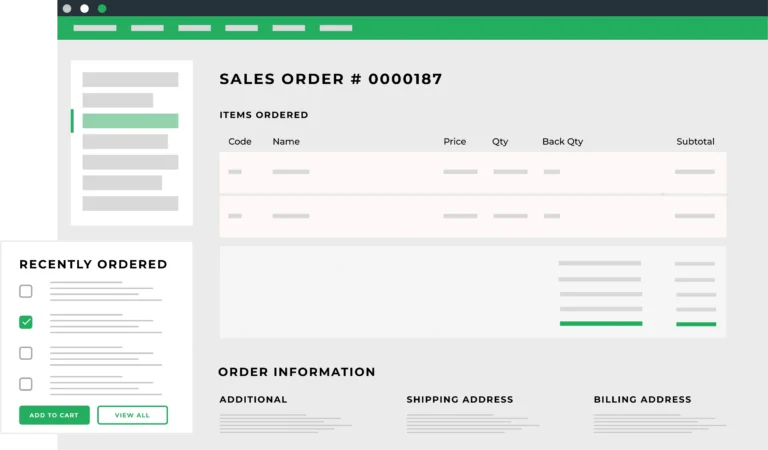
E-Link
E-Link forms a seamless, highly customizable bi-directional data synchronization between Sage 500 and Magento Adobe Commerce.

Automated Inventory Cycle Count
AICC automates the cycle counting process in Sage 100, Sage 300, and Sage 500, including automatically determining what items should be counted each day.

